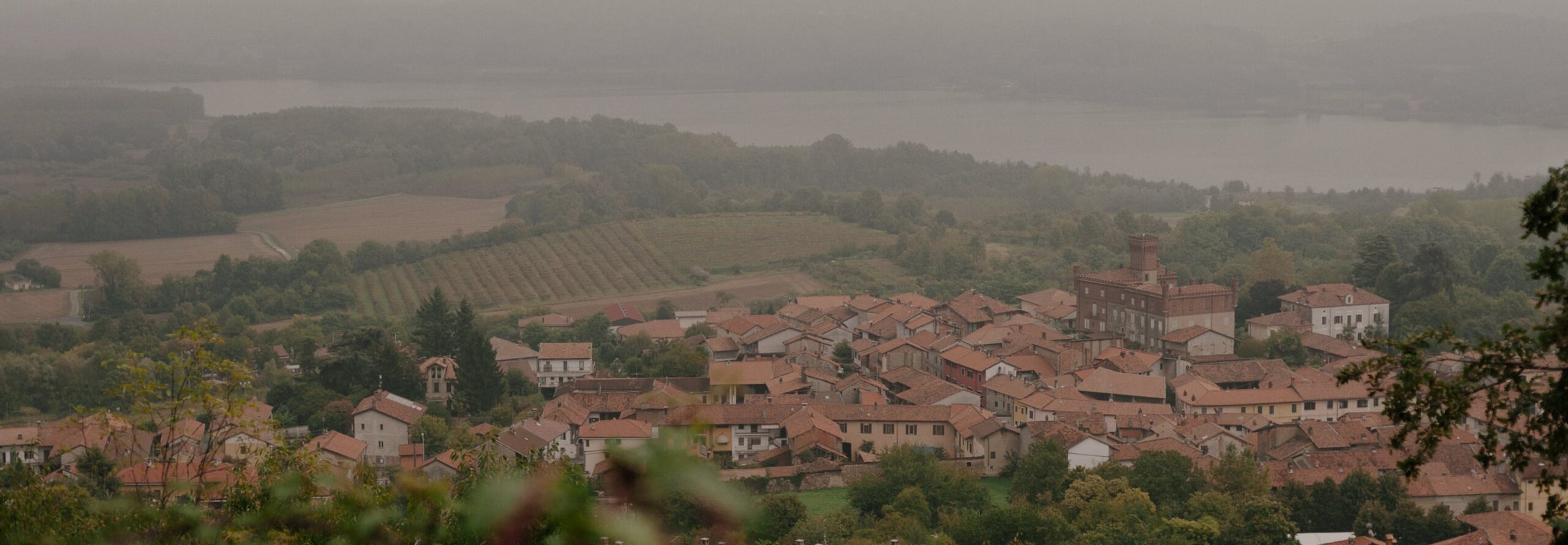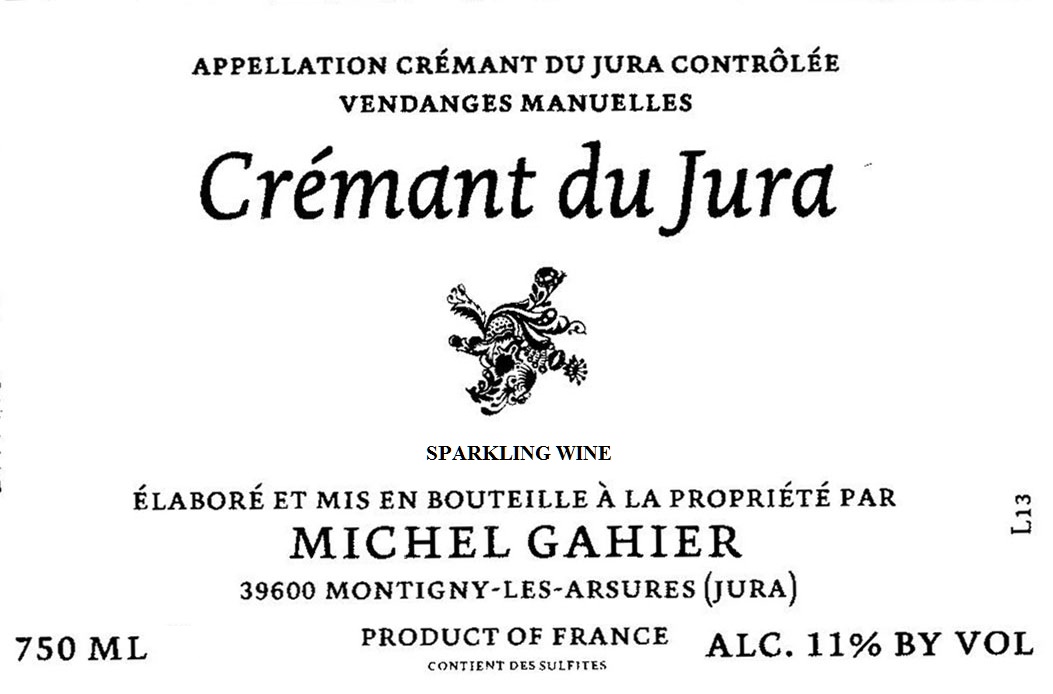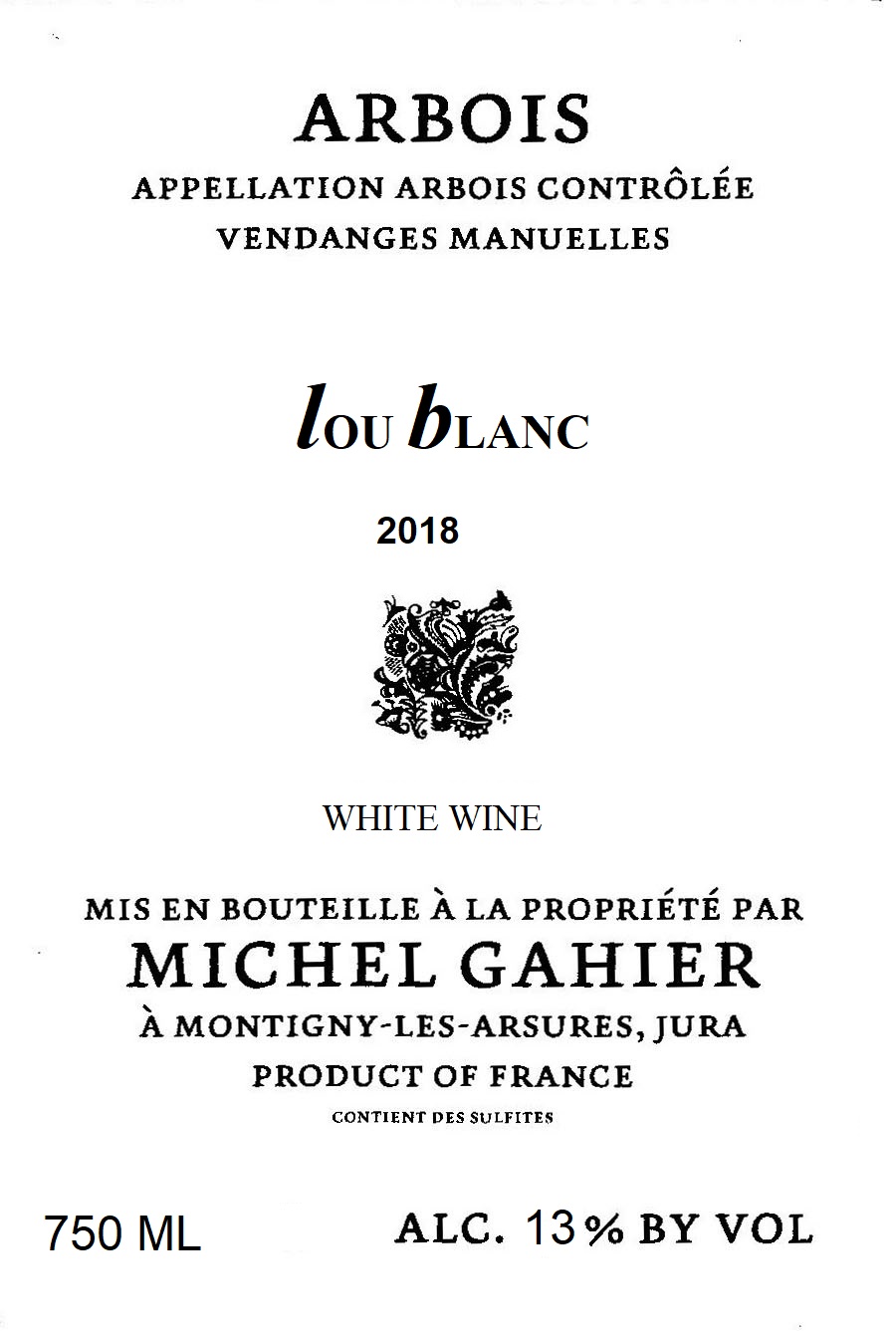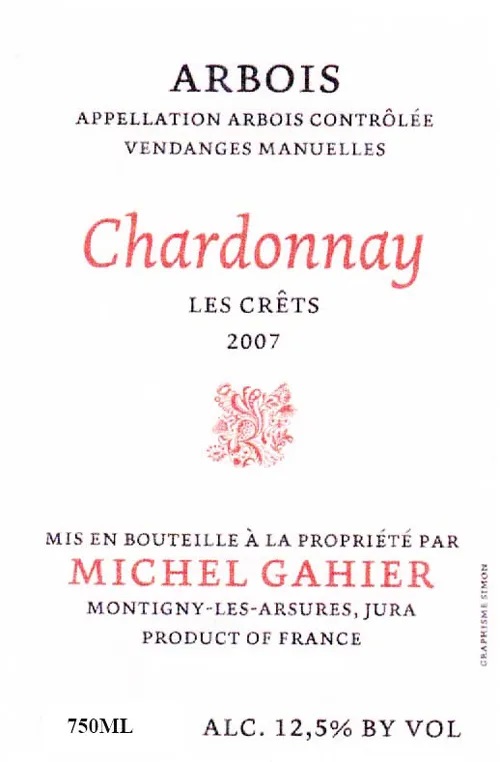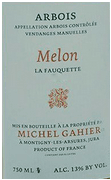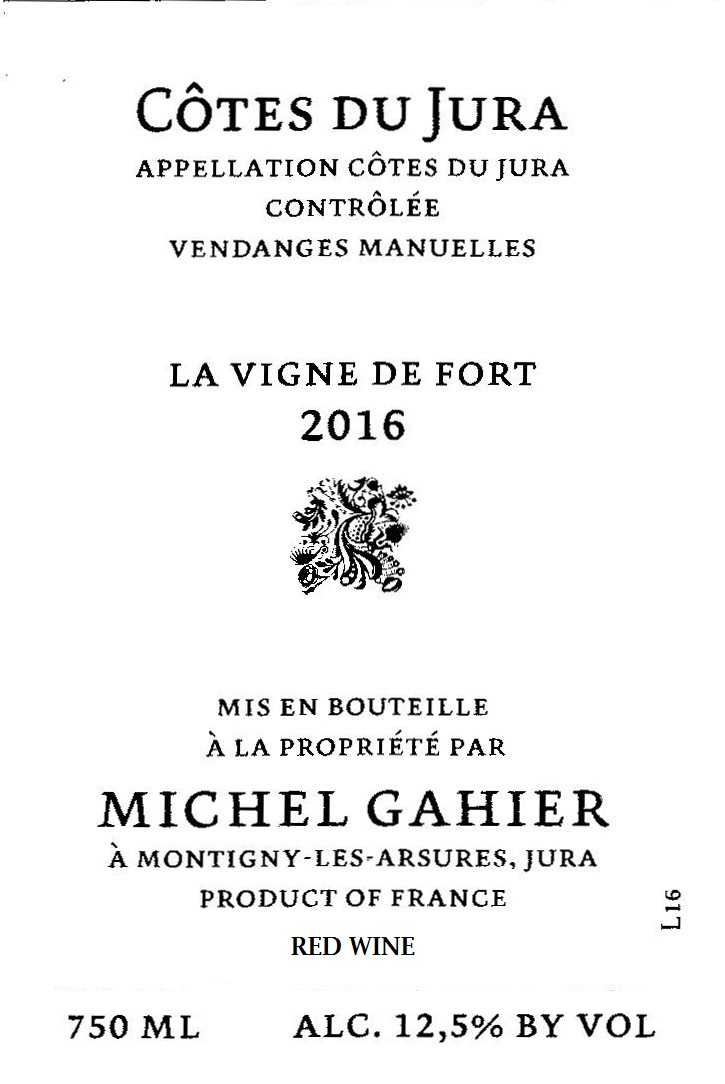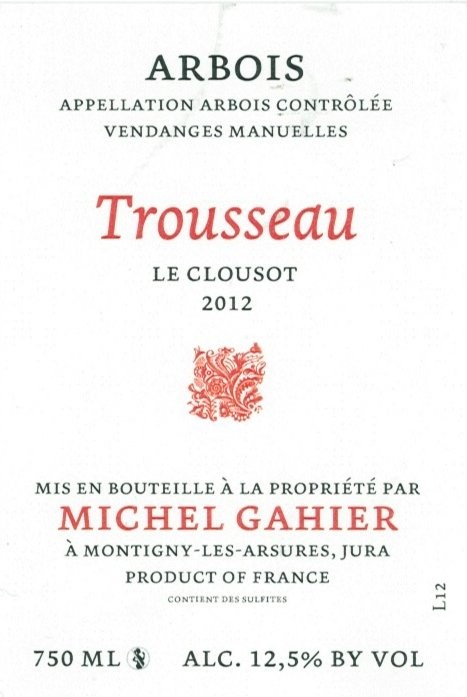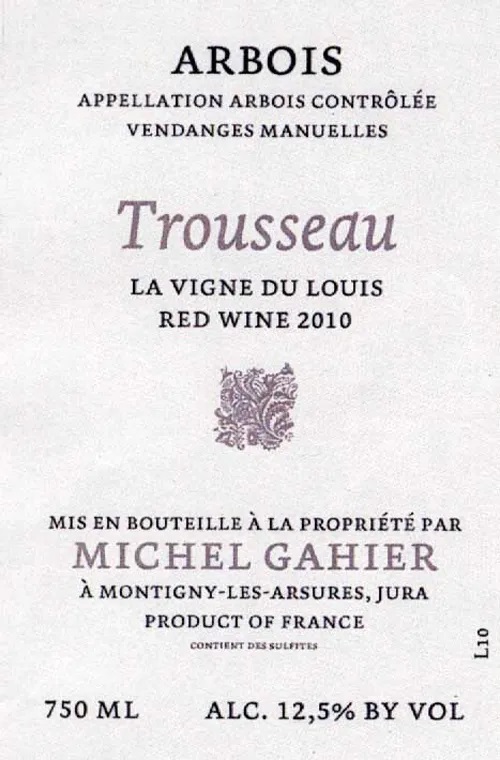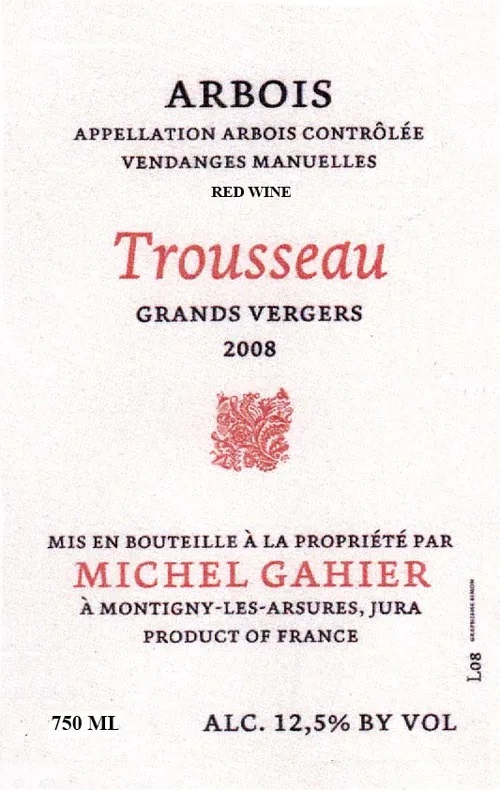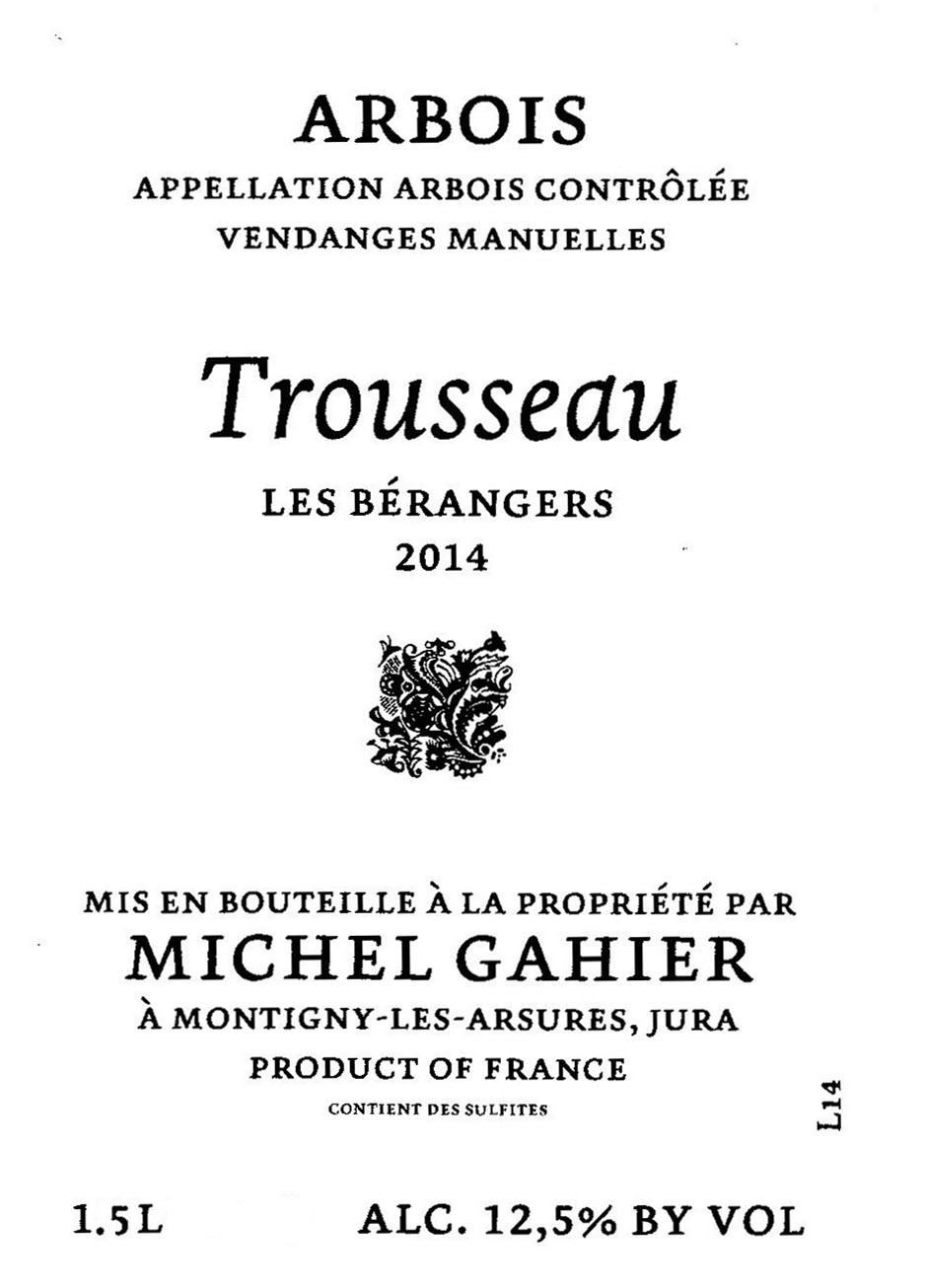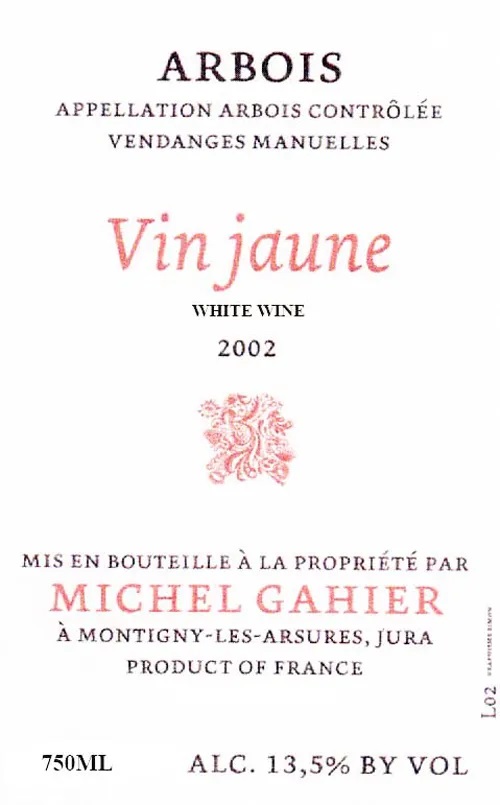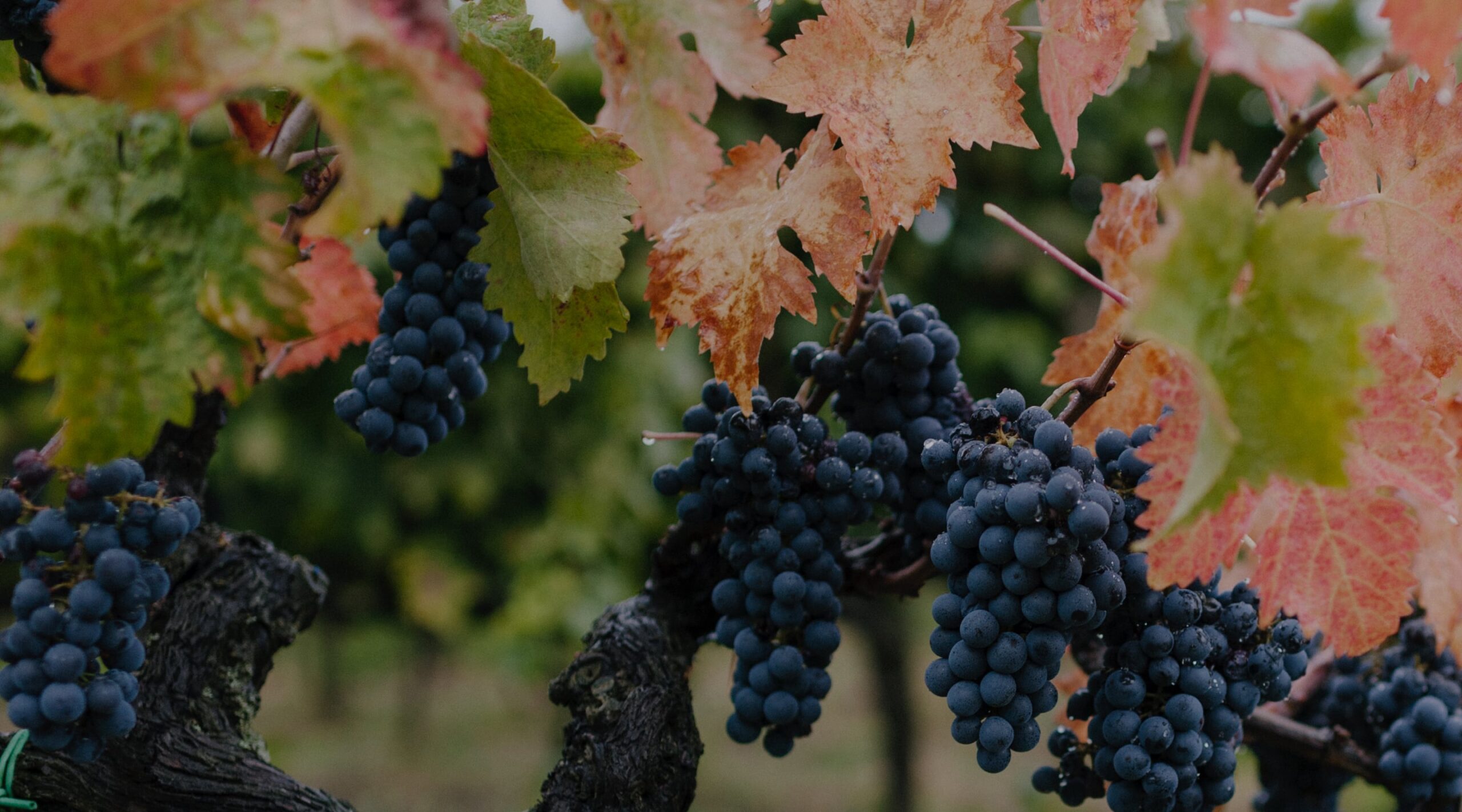
Michel Gahier
Wines
Montigny-lès-Arsures, Arbois
Crémant du Jura Blanc
This Champagne-method wine is made from 100% Chardonnay, specifically the local mutation that has a red stem, Melon à Queue Rouge. The yields are quite low at 45 hl/ha. This wine sees no dosage and spends 24 months on the lees before disgorgement. Produced completely naturally, no sulphur is added at any time in its production. Hailing from a 1.2-hectare plot of gravel and limestone soil in the village of Cramans, eight kilometers from Michel’s home in Montigny-lés-Arsures, it displays almond cream, brassy limestone twang, and salty citrus, offering a breadth of texture reined in by firm acidity.
Arbois Blanc, “Lou”
“Lou” is a relatively new cuvée for Michel, from 45-year-old Chardonnay vines in Montigny-lès-Arsures he recently acquired from his brother-in-law. Like “Les Crêts”, it spends two years in demi-muids and is kept topped up, but “Lou” displays more fruit-driven heft and lurking mineral power.
Arbois Blanc, Chardonnay, “Les Follasses”
From 45-year-old Chardonnay planted in marne blanche (white marl), “Les Follasses” is topped up in cask, but nonetheless delivers an unhinged expression of saline minerality. The marl here—a layer of decomposed limestone mixed with clay—pre-dates the limestone that dominates Burgundy’s Côte d’Or, and it is this marl (in varying iterations of color and mineral composition) that dominates the terroir of the Jura.
Arbois Blanc, Chardonnay, “Les Crêts”
From Chardonnay planted in soils of marne rouge (which contain more iron than marne blanche), “Les Crêts”, meaning “crest of the hill”, possesses a deeper and more saline personality than “Les Follasses” above. Though it is also topped up during its two-year passage in 400-liter barrels, “Les Crêts” displays the layered character and the endlessly ringing finish more commonly associated with wines aged under veil.
Arbois Blanc, Melon, “La Fauquette”
Always the greatest of Michel’s white wines, “La Fauquette” (from soils of marne bleu) spends four years in 400-liter barrels without being topped up. Despite the marked influence of the voile, however, it is the most elegant of Gahier’s whites: viscerally salty and rich, but with the finesse of great Corton-Charlemagne. Called Melon, the vines are of the local variety of Chardonnay known as “Melon à Queue Rouge”, a white grape the skin color of which bleeds towards red as it approaches the stem.
Côtes du Jura Rouge, “La Vigne de Fort”
From a small 0.3-hectare parcel of Trousseau (90%) and Pinot Noir (10%) in the same vineyard as the Chardonnay destined for Gahier’s Crémant. As is the fashion of the domaine, no sulphites have been added at any time during the winemaking process or at bottling. The wine is delicate in color and structure, with aromas and flavors of wild small-berried fruit, as if freshly plucked and washed in a mountain stream!
Arbois Rouge, Trousseau, “Le Clousot”
Situated on a southwest-facing slope beneath his Grands Vergers vineyard, Le Clousot is a parcel of the domaine’s younger vines from which Gahier produces a Trousseau in the same fashion as his others. Though lighter in color and structure, typically with a hint of reduction and a trace of trapped gas, it has good length with a vibrant, mineral freshness and hints of smokiness. A perfect introduction to the reds of Gahier.
Arbois Rouge, Trousseau, “La Vigne du Louis”
From a single vineyard in Montigny, planted in the 1970s, which has a northeast exposure that requires a harvest later than the other “cru” reds. A wine with expressive alpine aromatics and good tannic presence, Gahier recommends this cuvée with at least five years of age to it.
Arbois Rouge, Trousseau, “Les Grands Vergers”
“Les Grands Vergers” represents Gahier’s oldest Trousseau vines, planted in the 1940s on a gentle slope with superb exposure to the sun, contiguous with Puffeney’s legendary “Les Berangères” vineyard. Each vintage, it is the clear star among Michel’s reds. With its remarkable concentration, profound minerality, and tight-grained, savory palate, it always evolves beautifully in bottle.
Arbois Rouge, Trousseau, “Les Bérangers”
Lying next to “Les Grands Vergers” is the equally well-situated vineyard of “Les Bérangères,” the source for the legendary red cuvée from Gahier’s neighbor, Jacques Puffeney. Earlier in his career, out of respect for his mentor, Gahier did not put this vineyard name on his bottles. Now with the retirement of the “Pope of Arbois,” Gahier releases a wine (only in magnum) designated from the fabled vineyard. This is a classic interpretation of Trousseau from perhaps its best spot in the entire appellation—a wine that will reward many years of cellaring.
Arbois Vin Jaune
Gahier’s Vin Jaune is a tour de force. Selected from his finest plots of Savagnin, the wine ages “sous voile” in old oak barrels for around seven years before bottling. Gahier believes the best of his Vins Jaunes need twenty years to develop fully and surely at least ten years in bottle.
